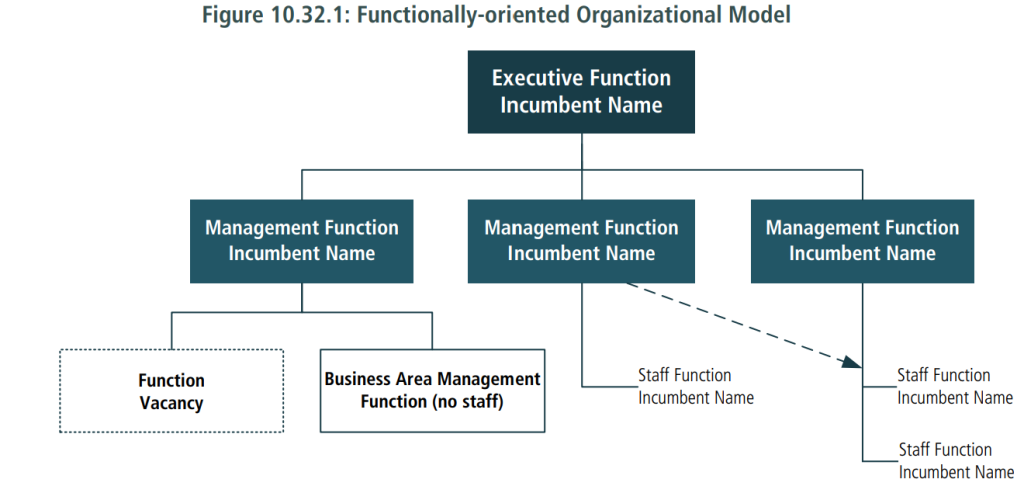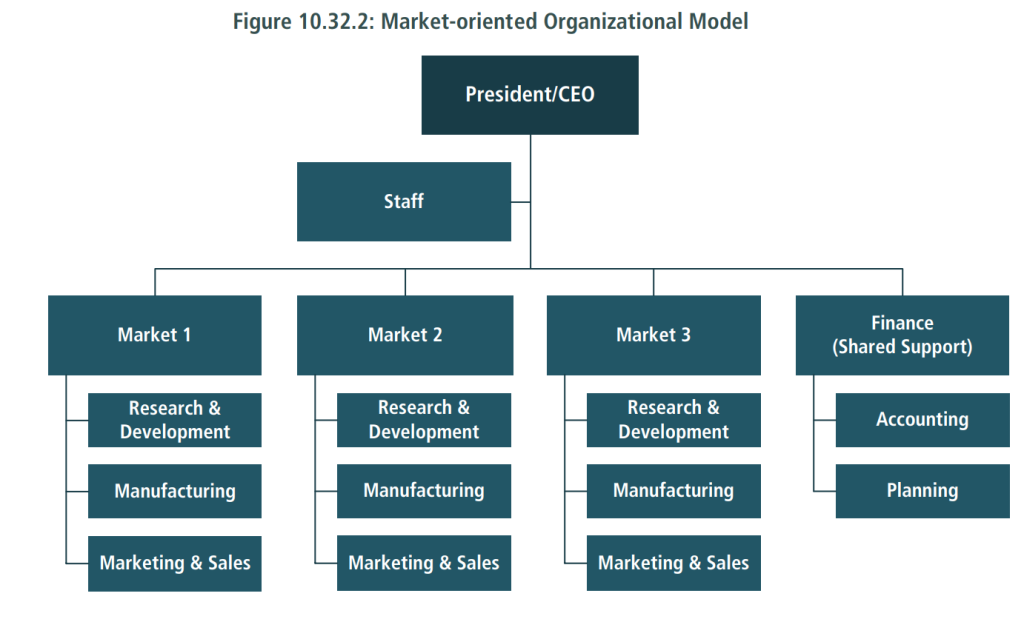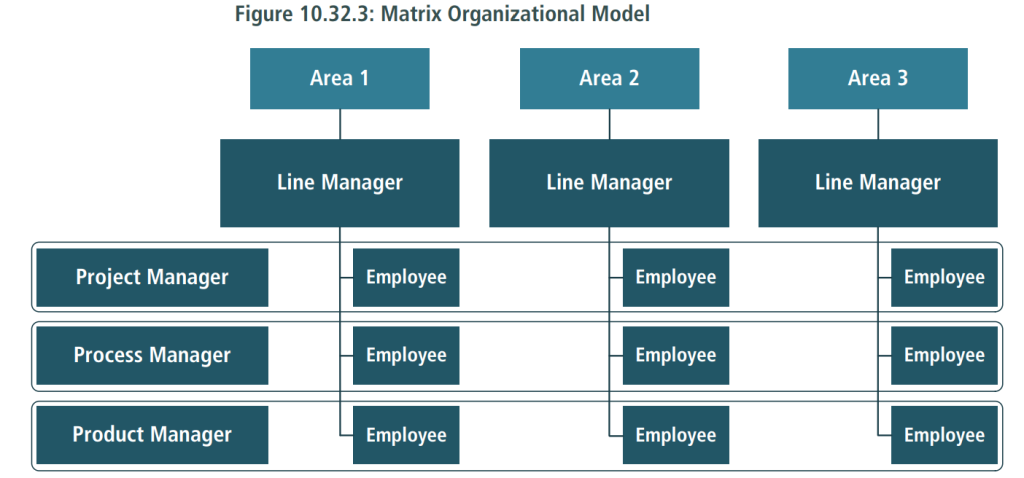10.32.1 Purpose
Organizational modelling is used to describe the roles, responsibilities, and reporting structures that exist within an organization and to align those structures with the organization’s goals.
10.32.2 Description
An organizational model defines how an organization or organizational unit is structured. The purpose of an organizational unit is to bring together a group of people to fulfill a common purpose. The group may be organized because the people share a common set of skills and knowledge or to serve a particular market.
An organizational model is a visual representation of the organizational unit which defines:
- the boundaries of the group (who is in the group),
- the formal relationships between members (who reports to whom),
- the functional role for each person, and
- the interfaces (interaction and dependencies) between the unit and other units or stakeholders.
10.32.3 Elements
.1 Types of Organizational Models
There are three pre-eminent organizational models:
• Functionally-oriented: group staff together based on shared skills or areas of expertise and generally encourage a standardization of work or processes within the organization. Functional organizations are beneficial because they seem to facilitate cost management and reduce duplication of work, but are prone to develop communication and cross-functional coordination problems (known informally as “silos”).

• Market-oriented: may be intended to serve particular customer groups, geographical areas, projects, or processes rather than grouping employees by common skills or expertise. Market-oriented structures permit the organization to meet the needs of its customers, but are prone to developing inconsistencies in how work is performed. Some may discover they are performing duplicate work in multiple areas.

• The Matrix Model: has separate managers for each functional area and for each product, service, or customer group. Employees report to a line manager, who is responsible for the performance of a type of work and for identifying opportunities for efficiency in the work, and to a market (or product, service, or project) manager, who is responsible for managing the product or service across multiple functional areas. A challenge of the matrix model is that each employee has two managers (who are focused on different goals) and accountability is difficult to maintain.

.2 Roles
An organizational unit includes a number of defined roles. Each role requires a certain set of skills and knowledge, has specific responsibilities, performs certain kinds of work, and has defined relationships with other roles in the organization.
.3 Interfaces
Each organizational unit has interfaces with other organizational units. Interfaces (interactions) may be in the form of communication with people in other roles and work packages that the organizational unit receives from or delivers to other units.
.4 Organizational Charts
The fundamental diagram used in organizational modelling is the organizational chart (org chart).
There is no recognized standard for org charts, although there are some conventions that most org charts follow:
- A box depicts:
- Organizational Unit: people, teams, departments, or divisions. An org chart may mix organizational units and show a mix of people, teams, and higher-level divisions.
- Roles and People: the roles within an organization and the people assigned to each role.
- A line depicts:
- Lines of Reporting: accountability and control between units. A solid line typically denotes direct authority, while a dotted line indicates information transfer or situational authority. Lines of reporting depict the relationship between a manager and an organizational unit
.5 Influencers
Organizational charts are the primary tool for beginning organizational modelling. Organizational charts represent the formal structure of the organization.
Business analysts also identify informal lines of authority, influence, and communication which may not directly align with the formal organizational chart.
Determining all of the influencers is important in planning communication and making provisions for user acceptance. One method of identifying influencers may be to ask stakeholders, “Who can I ask…” and note the answers. An influencer may be a person everyone goes to for information, direction, and advice. Another method is to note who speaks for the group in meetings.
10.32.4 Usage Considerations
.1 Strengths
- Organizational models are common in most organizations.
- Including an organizational model in business analysis information allows team members to provide support. Future projects may benefit from knowing who was involved in this project and what their role entailed.
.2 Limitations
- Organizational models are sometimes out of date.
- Informal lines of authority, influence, and communication not reflected in the org chart are more difficult to identify and may conflict with the organizational chart.
